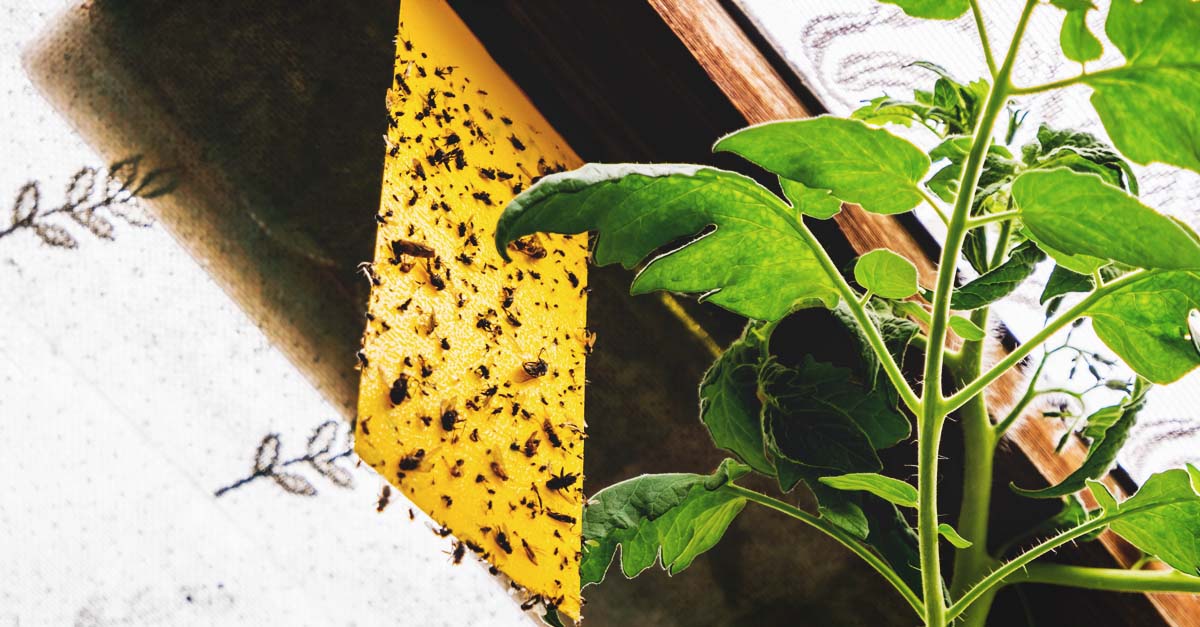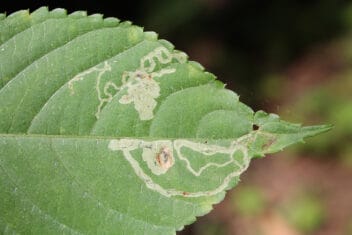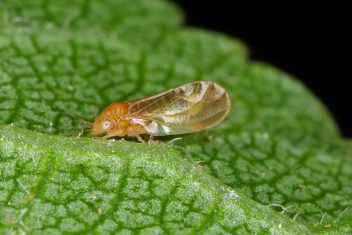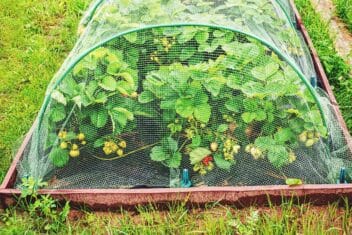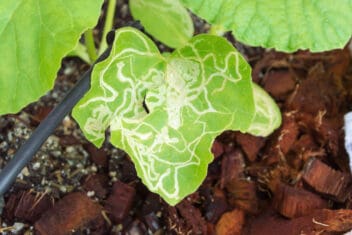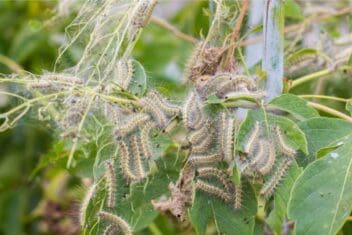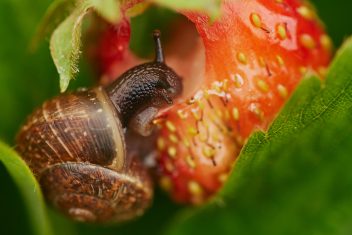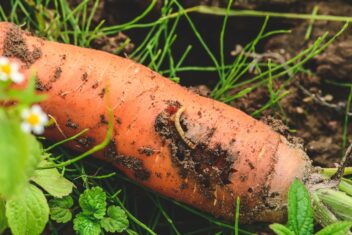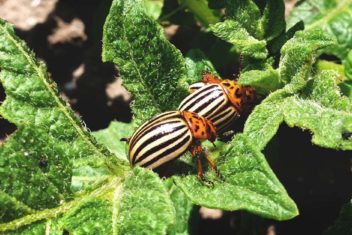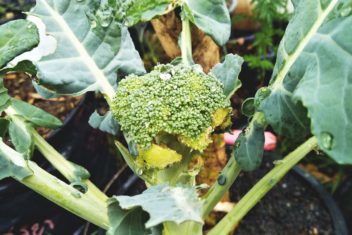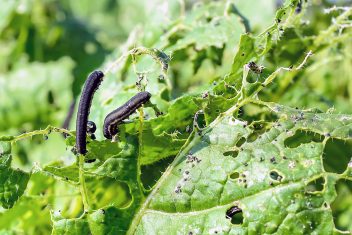Gnats are a pesky little problem, no matter if you’re dealing with the larvae or adults. They love houseplants, along with any place that has moisture and humidity. Once you have the little buggers, figuring out to get rid of fungus gnats can be a challenge.
Most people find themselves with a fungus gnat problem at least once in their lifetime. They’re a common pest of plants grown inside, especially if humidity and moisture levels are high.
You might first notice little adult gnats gathering around your house plants or a window. Initially, you set out a trap, and move on with your life. After all, they’re a tiny, non-biting adult insect, so how much harm can they do? The answer is a lot. Over time, fungus gnat larvae can seriously damage tender plant roots.
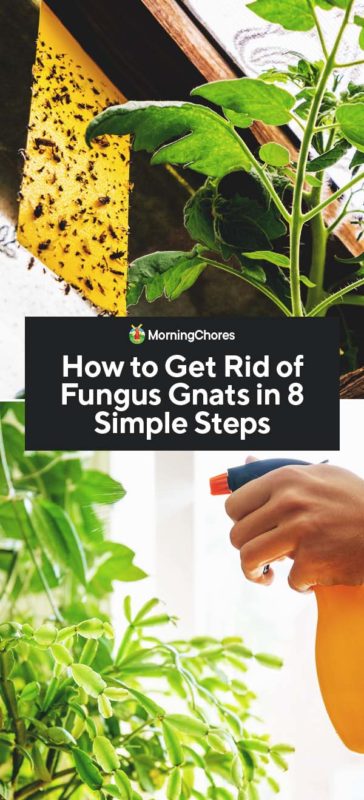
What Are Fungus Gnats?
Fungus gnats are a fruit fly-sized insect pests that impact indoor houseplants. They’re completely harmless to humans – fungus gnats can’t bite and don’t spread diseases. Plants, on the other hand, are a different story.
So how can you tell you have them? Fungus gnats are one of the most common houseplant pests, but they aren’t the same thing as fruit flies. They’re darker in color than fruit flies. Plus, fruit flies hang out near fruit, rotten food, and dirty fridges.
If you have a fungus gnat infestation, you might notice sudden wilting, weak growth, loss of vigor, and yellowing of foliage. Severe infestations lead to a loss of a significant portion of the plant.
The Life Cycle of Fungus Gnats
When contending with any pest, I think it’s valuable to understand their life cycle.
One thing to remember is that these insects don’t live too long. Adults live for about one week, and during that week, they lay up to 300 eggs in fertile, moist soils. Then, the pupal stage lasts around 3-4 days before the adults leave the ground.
The cycle will go on and on, but you can see how infestations can happen quickly. One adult can create 300 more gnats, and the entire cycle from egg to adult takes 3-4 weeks, depending on the temperature.
How Do You Identify Fungus Gnats?
Adult fungus gnats are delicate, grayish-black, mosquito-like flies. They’re about 1/8 inch long with long legs and one pair of transparent wings. Fungus gnats aren’t strong fliers. They’ll usually hang out on plants and in soil, but they’ll take flight when you water the pots.
Larvae fungus gnats are 1/4 inch long with a shiny black head and an elongated, whitish body. You can find these larvae mostly in damp, rich soils, feeding on root hairs, fungi, and other organic materials.
Plants Vulnerable to Fungus Gnats
Potted plants can host fungus gnats at any stage – egg, larvae, pupae, and adults. That’s why these pests most commonly frequent them. While they don’t discriminate and typically pick any household plant, a few plants are more prone to problems:
- African Violets
- Geraniums
- Carnations
- Poinsettias
- Spider Plants
- Peace Lilies
- Wandering Jews
How to Get Rid of Fungus Gnats
Getting rid of any pest from your plants typically requires a few steps. It’s usually not as simple as spraying a plant and watching all the bugs vanish. You need to be active in your pursuit to destroy the infestation.
Learning how to get rid of fungus gnats involves a lot of dedication. Catching the adults is the easy part, but since we know that these insects have a fast repopulation growth cycle, you have to take care of the eggs as well.
4 Prevention Methods to Stop Fungus Gnats
The hope is that you won’t ever have an issue with fungus gnats, so if you want to avoid them entirely, you need to take some preventative steps. These methods will help to stop fungus gnats from infesting your plants in the first place.
1. Inspect Before Purchase

If you purchase a plant in the store, make sure you inspect it thoroughly before purchasing, looking for any signs of insects or pests. Turn up the soil carefully near the base of the plant, looking for glossy, transparent larvae. If there are flying gnats around the plant, don’t pick it!
2. Don’t Overwater Your Plants
Fungus gnats prefer damp soil, so the best thing to do is avoid overwatering your plants. This step is particularly important during the winter months when plants use less water. You also want to make sure that you don’t use potting soil that holds onto water. Peat moss is an example of a medium that might retain moisture and encourage egg-laying.
3. Add a Sand Layer
Another tactic that you can use to prevent gnats from taking hold is to put a half-inch layer of coarse sand on the top of your houseplant’s soil. Doing so stops adult gnats from laying eggs and new gnats from emerging from the soil. If you go this route, you want to make sure to consistently add more sand.
4. Cover Drainage Holes
Gnats typically stay near the top of the pots of your houseplants, but sometimes they find their way into the drainage holes on the underside of the pot. Gnats can also lay their eggs in the drainage holes of your container.
To prevent this from happening, cover the drainage holes with a piece of synthetic fabric. Just wrap a piece of fabric around the base of your pot and secure it with a rubber band. Covering the holes also stops gnats from getting out of or into the hole. The material lets water pass through freely but will stop gnats.
8 Ways to Get Rid of Fungus Gnats
So, your preventative methods didn’t work. Don’t worry, it happens to the best of us. No matter how hard I try, some pest comes to bother my plants. When that happens, you need to take active steps towards learning how to get rid of fungus gnats.
1. Let The Soil Dry Out
If you find eggs in your soil, the first thing you need to do is let the soil dry out to at least a depth of 1-2 inches between waterings. Stick your finger into the soil and see how far you have to insert it to find moist soil. Dry soil kills the larvae and stops the development of eggs while also making the soil less appealing to egg-laying females.
2. Yellow Sticky Traps
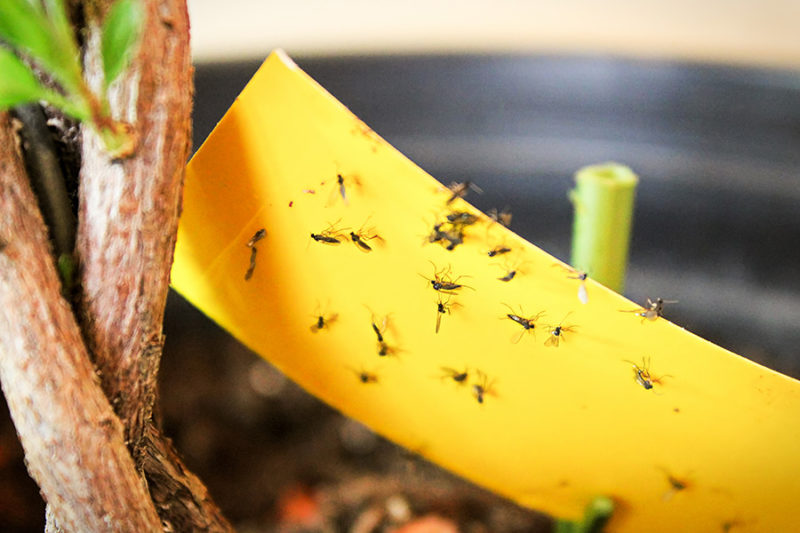
Don’t discount the classic yellow sticky traps. You can hang them near your plants, and they’ll attract the adult gnats who love the color yellow. You can also try placing the traps horizontally at the soil surface to gather large numbers of egg-laying female adult fungus gnats.
Yellow sticky traps are easy to use, affordable, and useful. When the trap is full, remove it and put a new one down.
3. Use BT
Bacillus thuringiensis (BT) is a biological pesticide that kills larvae. BT is safe for humans and won’t harm beneficial species of insects, fish, and other wildlife. It doesn’t have any harmful residues, so it’s safe for you to use it in your house.
4. Introduce Beneficial Nematodes
Adding nematodes as a top dress to your houseplants will help to destroy the larvae stage of the fungus gnats. Nematodes are microscopic roundworms that attack fungus gnat larvae, as well as other lawn and garden pests. Don’t worry; nematodes don’t attack earthworms.
Nematodes release a bacterium into the soil that leads to pests dying from the inside out. Best of all, nematodes are safe to use around your pets, other plants, and your family.
5. DIY Non-Toxic Spray
I’m all about creating my non-toxic sprays to use in my garden to get rid of pests and other bothersome critters. Some gardeners use a combination of cinnamon, sesame oil, and peppermint to deter fungus gnats.
6. Use Neem Oil
Neem oil is another organic spray that works to destroy frustrating pests that attack your plants. Neem oil comes from the neem tree that lives in Africa and Asia.
7. Make a Vinegar Trap
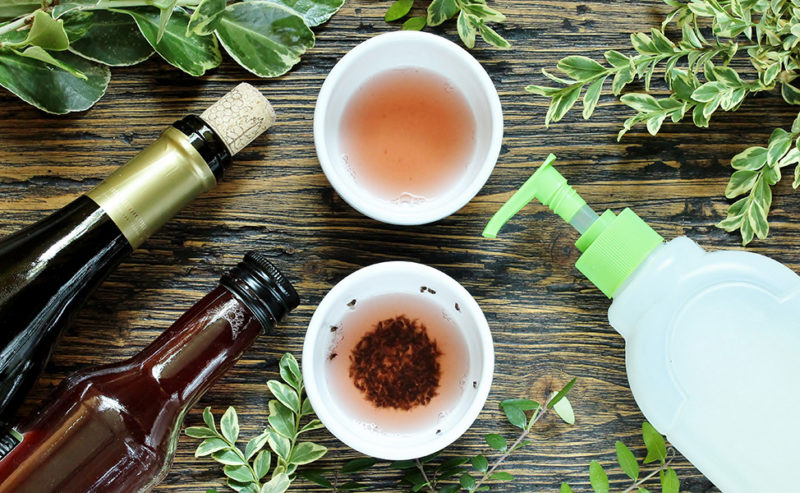
One of my favorite ways to catch any gnats – fruit or fungus – is with a vinegar trap. They’re simple to make, and they work. I’ve caught thousands of gnats with these little things.
Put equal parts apple cider vinegar and water, and a dash of liquid dish soap into a shallow container. Put a plastic baggie over the top and secure it with a rubber band. Then, poke holes in the plastic to let the gnats come into the container without having a way to escape.
8. Give a Diatomaceous Earth a Try
Diatomaceous earth (DE) is an organic powder that works well on fungus gnats. DE sticks to the gnats, dehydrating and immobilizing them. You can find food-grade DE in most garden stores. All you have to do is dust the soil surface with DE, especially the inside edges of the pot.
Make sure you only apply when the soil is dry because otherwise, the DE will soak up the moisture and won’t stick to the gnats. If it doesn’t stick to the gnats, it won’t work!
Figure Out How to Get Rid of Fungus Gnats
Fungus gnats are harmless pests to humans, but they can destroy your plants in a heartbeat. You don’t want them around your house, so that’s why you need to figure out how to get rid of fungus gnats. Work on preventative measures for all of your houseplants. If you notice any sign of them, start working on getting rid of them and remember – be consistent.
